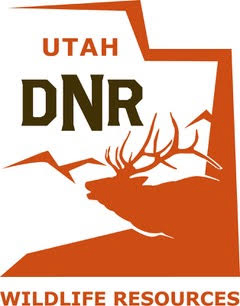The Ethics of Sighting In
By Glen Wunderlich
Outdoor Columnist
Member Professional Outdoor Meida Association
Sighting in can be a joy, if all goes well; it can mean back to basics if it doesn’t. And, with only two weeks remaining until the beginning of firearms deer season, it’s time to find out, just in case some corrective action is required. No sportsman goes afield without a clear understanding of how his bullet will perform in the accuracy department.
Targets were set up at 50 and 100 yards for the initial target shooting with the goal of punching paper to qualify to hunt at longer ranges. Any shooter can find his maximum point blank range (mpbr) by hitting 6-inch targets with no more than 1 miss in 10 at 25-yard increments beyond 100 yards. The idea is to hold on the target’s center at any given range without the bullet going over 3 inches high and no more than 3 inches low. There is no requirement to actually shoot 10 times per target – unless any one shot misses.
At 50 yards I shot a tight group of 2 inches with a .44 magnum Ruger Redhawk revolver with 200-grain Nosler hollow points utilizing an inexpensive red dot sight. However, that was my limit for this session because the red dot blocked out the target at 100 yards.
You can’t hit what you can’t see. Besides, better tools were available.
The sizzling slug guns and modern muzzleloaders were expected to easily qualify at 100 yards but Doug’s muzzleloader wasn’t cooperating. He had it dialed in at 130 yards before this session but not this time. We weren’t sure if something had come loose or exactly what the malfunction was but at least he had time to straighten things out. Nonetheless, it was discouraging.
Joe forgot his muzzleloader but managed to remember his 20-gauge Remington slug outfit, which barely qualified at 100 yards. There didn’t seem to be any sense pushing this rig beyond that.
Bucky followed with a 12-gauge single-shot slug gun topped with a Leupold low-power variable scope firing Remington 385-grain sabots well within the 6-inch circle.
My Knight Revolution was up next with its 250-grain Barnes bullets scooting along at 2190 feet-per-second. With a group the size of a golf ball, I set it up just above the center of the target so that I’d be ready for the 125-yard challenge at a secondary range.
Unfortunately, the wind was gusting from 15 to 20 miles per hour, and because it would have been at a 90-degree angle, we cancelled the qualifying round beyond 100 yards for the day.
On a still afternoon during the week, while everyone else was doing more important things (like earning a living), I set up 6-inch Birchwood Casey Shoot-N-See targets at 125, 150, and 175 yards. These targets allow a shooter to use binoculars (instead of a spotting scope) to see the bullet holes way out there. My ballistics software indicated that my hot muzzleloader load would be 1.5 inches low at 175 yards with a 160-yard zero. I’m not from Missouri, but I wanted to see for myself if I could trust the computer’s calculations.
The first shot at 125 yards was 1.25 inches low and a little to the right. A quick turret adjustment placed the second shot 1.5 inches above the center and just over an inch right. (The computer indicated the bullet should be 2 inches high for a 160 yard zero).
I took the 150-yard test and sure enough, less than 1 inch above center and 1 inch right.
Without another adjustment, I let one go at the 175-yard circle and it hit 1.625 inches below center and one-half inch to the right. The next shot was a mere one-half inch low and .75 inches right. Once again, the computer calculation for 175 yards had the bullet 1.5 inches low. And, if you’re thinking maybe the energy foot pounds would be less than desired at the longer distance, consider this: The Knight Revolution with the 150-grain Triple Seven powder charge, Remington muzzleloader primers, and 250-grain Barnes bullet would retain 1330 foot pounds at 175 yards – well above that of a .44 magnum at the muzzle!
I would have preferred to do more testing with the muzzleloader but I had only about 12 bullets remaining and decided to save them for hunting.
I strongly recommend such a challenge for every ethical deer hunter. There’s no responsible reason to experiment afield, if you haven’t practiced at the range.





